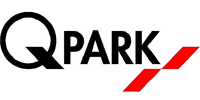
In years past, the future seemed miles away … a distant landscape that would affect our children, our grandchildren, or even our great-grandchildren. These days, the future is sometimes right around the corner, ready to meet us head on. This immediacy of the future affects every aspect of our lives, including parking.
More specifically, four inter-related aspects of future reality are important here:
- the autonomy of cars,
- the autonomy of people,
- a well-functioning society, and
- a smart infrastructure.
This is the first of four articles about each aspect separately.

Autonomous vehicles will transform our society
Nobody is certain just when autonomous vehicles (AVs) will become mainstream. Will it take 10 years as some believers say, or more than 50 as an increasing number of experts now think. However medium or long term the advent of truly autonomous vehicles will be, what will they mean for parking? More specifically, what is Q-Park’s approach to dealing with this phenomenon?
AVs, in various stages of autonomy, have already started to appear on our roads. As they become more prevalent and cheaper, more people will want to own one. As AVs become more common, benefits will become apparent, such as easier access to transport for the elderly or people with disabilities.

But AVs may also create new problems, such as increased congestion and negative environmental impact as there will be more vehicle miles travelled. They may also affect public health, as people decide to use AVs instead of walking or cycling.
Will AVs mean more people gain access to easy road transportation? What about the way we spend our time, as the idea of travel time becomes intertwined with work and leisure? How often will we see cars with zero-occupancy as they are on their way to collect errands or other members of the family?
Certainly, we will see changes to legislation, public finances, road safety and traffic efficiency as people, infrastructure and public transport adapt to the inclusion of AVs in our midst.
Perhaps one of the largest changes will be the idea of ‘door-to-door’ mobility. For everyone, for every trip, as people forego public transport and Park+Ride options in favour of travelling hands-free right to their destination.
Moving towards driverless parking
All those AVs will have to park somewhere, preferably near to where they dropped their passengers or where passengers need to be picked-up, because people do not want to wait or lose any mobility flexibility.
Furthermore, nobody wants to see empty cars adding pressure on our already busy streets. And on-street will not be the answer as on-street parking capacity is already decreasing in many urban areas to favour bicycles, buses, taxis and pedestrians.
Q-Park has already put much thought into what this will mean for a purpose-built parking facility. While self-parking cars are now in their infancy, we nevertheless have broadened our planning perspective – as in the future we may have to accommodate driverless cars and shift from a ‘park your car’ approach to ‘your car parks’ solutions.
What does this mean, specifically?
Some good news when preparing for our future:
- Due to lower complexity in our parking facilities compared to inner-city streets, we can experiment quicker and safer. There is no fast-moving traffic, no adverse weather conditions and there are hardly any children playing, or bicycles and pedestrians around. Signage is robust and surveillance is already in place.
- We know that AVs will need to be within a certain radius of their owners/customers, as AVs will service flexible and on-the-spot mobility needs.
- Random on-street Kiss+Ride will not service the potential volume of drop-off and pick-up needs as on-street parking capacity is already decreasing, favouring people and attractive places over cars.
- AVs are not revolutionary but evolutionary to our business.
Q-Park: value-added solutions that are ready for the future
As a forward-thinking parking service provider, the questions we have to answer include:
- What kind of services add value to AV owners or AV fleets?
- What are the changing needs, of users and of society, and how to balance those needs in increasingly dense cities?
- How should we design, plan and build our parking facilities efficiently and effectively over time?
- What specific activities do we test, improve and scale?
- How can we optimise parking capacity in urban areas, keeping them liveable and accessible?
- What will happen during peak moments, in car parks and at on-street Kiss+Ride drop-off and pick-up points?
- Do self-parking cars need light, ventilation? Maybe not, or just less!
- Will AVs become so smart that they e-charge autonomously too? And if so, how do we optimise charging needs of autonomous electric vehicles?
- Do they need less space?
- Probably not, they are just as big and need space to drive around and turn into and out of a parking space.
- They may not need to open passenger doors, but that is not a significant space saver.

Whatever we as a society think about AVs – whether they are safe, whether they are practical, and when exactly we will reach a tipping point in usage – Q-Park will be ready.
Along with trusted partners, we will continue to work towards the future as we find value-added solutions for owners and fleets of autonomous vehicles. We will transform our parking facilities accordingly. Because as a proactive company, we are ready to meet the future head on!
About Q-Park
Q-Park is an international parking company, focused on value development by providing high-quality services in purpose-built parking facilities and off-street parking at strategic locations. Q-Park's activities focus on providing services related to parking at targeted locations: in or near multifunctional inner-city areas, at public transport interchanges and at hospitals. We supply services that fulfil customers’ demands, and their need for convenience, reliability and hospitality.



